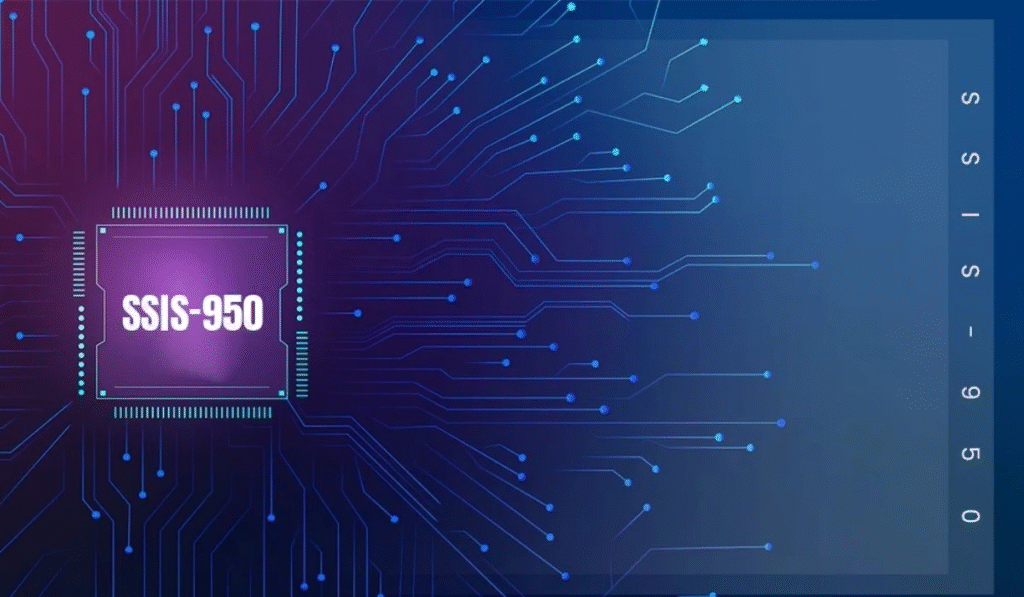Business
Who Is Behind SSIS 950?: The Complete Guide for Beginners

In the world of data management and enterprise solutions, SSIS 950 has become a crucial subject for businesses and developers who deal with complex integration challenges. SSIS stands for SQL Server Integration Services, a Microsoft product designed to handle large-scale data migration, transformation, and workflow processes. The reference to usually points to updates, configurations, or builds related to SQL Server 2019 or later versions, which include package handling improvements, performance tuning, and extended data flow capabilities. While it may sound highly technical at first, understanding is essential for organizations that want to streamline their data pipelines and ensure that their systems are capable of managing the ever-increasing volumes of information in today’s digital landscape.
What is SSIS 950 and Why Does It Matter
SSIS 950 is not just a minor version tag but rather a milestone in the development of SQL Server Integration Services. It encompasses compatibility and deployment features that make managing and scaling data-centric operations much easier. Businesses rely on SSIS 950 for tasks such as extracting data from multiple sources, transforming it into usable formats, and loading it into databases, warehouses, or cloud platforms. This process, known as ETL (Extract, Transform, Load), is the backbone of data-driven decision-making. Companies that invest in SSIS can benefit from its ability to automate repetitive workflows, manage complex dependencies, and improve overall operational efficiency.
Key Features of SSIS 950

One of the main reasons SSIS 950 stands out is the wide range of features that come with it. For developers, SSIS offers a highly visual development environment where packages can be built using drag-and-drop components. This reduces the learning curve while still allowing advanced customization through scripting. SSIS brings enhancements such as better performance optimization for large datasets, advanced error handling, and support for modern data sources like cloud-based storage and APIs. Another significant feature is its scalability. Whether a company is handling a few gigabytes of data or terabytes of complex information, SSIS 950 has the tools and architecture to accommodate it. These improvements make it an indispensable tool for organizations with demanding integration needs.
Benefits of Implementing SSIS 950 in Business
The benefits of using SSIS 950 extend well beyond its technical aspects. From a business perspective, the platform helps save time and reduce costs by automating data migration and integration tasks that would otherwise require significant manual effort. This efficiency translates into better use of resources, allowing teams to focus on innovation instead of repetitive processes. SSIS also enhances data accuracy by reducing the risk of human error during manual data handling. Moreover, it enables real-time or near-real-time integration, which is critical for businesses that rely on up-to-date information to make decisions. By implementing SSIS, companies can also strengthen compliance and governance since the system allows for auditing, monitoring, and reporting capabilities that help ensure data integrity.
How SSIS 950 Supports Data Transformation

At the heart of SSIS 950 lies its ability to perform complex data transformations. Data collected from different sources often comes in varied formats, making it difficult to consolidate and analyze. SSIS 950 addresses this issue by providing a suite of transformation tools that can clean, aggregate, split, and restructure data according to business needs. For example, a company may need to combine customer data from CRM systems with financial records from ERP platforms. SSIS allows this integration seamlessly, ensuring that the final dataset is consistent, accurate, and ready for analysis. Furthermore, the platform can handle unstructured data, giving organizations greater flexibility in the kinds of information they can leverage for business intelligence.
Real-World Applications of SSIS 950
SSIS 950 has found applications across a wide variety of industries. In retail, businesses use it to manage point-of-sale data, inventory updates, and customer loyalty programs by integrating multiple systems into a single warehouse. In healthcare, helps consolidate patient data from different systems while adhering to compliance requirements like HIPAA. Financial institutions benefit from SSIS by automating transaction data flows, fraud detection systems, and regulatory reporting. Even in smaller organizations, 950 proves useful for consolidating marketing campaign data, analyzing website traffic, and syncing information between on-premises and cloud-based platforms. This versatility shows that SSIS is not just for large enterprises but is equally relevant for businesses of all sizes.
Challenges in Working with SSIS 950

While SSIS 950 offers many benefits, it also comes with its own set of challenges. One of the most common difficulties is the initial learning curve, especially for teams that have limited experience with SQL Server environments. Building complex packages may require specialized skills in both SQL scripting and system architecture. Performance tuning can also be challenging, particularly when dealing with extremely large datasets or real-time requirements. Additionally, deployment and configuration in hybrid environments, where data flows across both cloud and on-premises systems, can present complications. However, these challenges can be mitigated with proper training, documentation, and best practices, ensuring that businesses get the most out of SSIS.
Best Practices for Using SSIS 950
To maximize the benefits of SSIS 950, organizations should follow certain best practices. One key recommendation is to break down large and complex packages into smaller, modular ones to improve maintainability and debugging. Proper logging and error handling should always be implemented to quickly identify and resolve issues. Another best practice is to use parameterization and configuration files, which allow for flexibility when deploying packages across different environments such as development, testing, and production. Performance optimization, such as tuning buffer sizes and minimizing unnecessary transformations, also plays an essential role in maintaining efficiency. By adhering to these best practices, teams can ensure that their SSIS 950 solutions remain reliable, scalable, and sustainable in the long term.
Future of SSIS 950 and Data Integration

Looking ahead, the role of SSIS 950 in the broader landscape of data integration will continue to grow. As organizations move toward cloud-first strategies, the demand for hybrid solutions that can manage both on-premises and cloud data will rise. Microsoft has already introduced Azure Data Factory as a complementary solution, but SSIS remains highly relevant due to its robust ETL capabilities and compatibility with enterprise systems. The future may see tighter integration between SSIS and cloud-native tools, making it even more powerful in handling complex data scenarios. Businesses that invest in understanding and implementing SSIS today will be better prepared for these advancements, ensuring that they remain competitive in the ever-changing world of data management.
Conclusion
SSIS 950 is more than just a technical update; it is a comprehensive solution for modern data integration challenges. Its powerful features, scalability, and wide range of applications make it a cornerstone for organizations that value efficiency, accuracy, and real-time decision-making. While challenges exist, they can be overcome with training and adherence to best practices. The evolution of SSIS 950 demonstrates Microsoft’s commitment to supporting enterprises in their data-driven journeys, and its relevance is expected to continue well into the future. For businesses and developers alike, SSIS represents an opportunity to harness the full potential of their data resources.
Frequently Asked Questions
1. What does SSIS 950 stand for
- SSIS 950 refers to SQL Server Integration Services with specific updates and compatibility builds, often associated with SQL Server 2019 and later versions.
2. What are the main uses of SSIS 950
- SSIS 950 is primarily used for data extraction, transformation, and loading, as well as workflow automation across multiple systems.
3. Is SSIS 950 suitable for small businesses
- Yes, SSIS 950 is scalable and can be implemented by both small businesses and large enterprises depending on their data needs.
4. What challenges might I face with SSIS 950
- The main challenges include a steep learning curve, performance tuning for large datasets, and managing hybrid deployments.
5. How does SSIS 950 differ from Azure Data Factory
- While SSIS 950 is a traditional ETL tool designed for on-premises and hybrid environments, Azure Data Factory is a cloud-native solution. Both can complement each other in modern data architectures.

-

 Life Style9 months ago
Life Style9 months agoWho is Amra Nor Jenkins? The Untold Story About Jeezy’s Daughter
-

 Celebrity5 months ago
Celebrity5 months agoThe Private World of Marina Pearl LeBlanc, Matt LeBlanc’s Only Child
-

 Entertainment10 months ago
Entertainment10 months agoWhat is Shoujo Ramune? The Comprehensive Guide
-

 Celebrity11 months ago
Celebrity11 months agoThe Untold Truth of William Mapel: A Deep Dive into His Personal Life
-

 News11 months ago
News11 months agoRanch World Ads Review: Everything You Need to Know
-

 Celebrity11 months ago
Celebrity11 months agoThe Untold Story of Denika Kisty: Her Family, Net Worth, and More
-

 Celebrity11 months ago
Celebrity11 months agoWho Is Stephanie Sarkisian? All You Need To Know AboutSteve Sarkisian’s Ex-Wife
-

 Life Style10 months ago
Life Style10 months agoJill Wagner Accident: Life and Health After Accident











